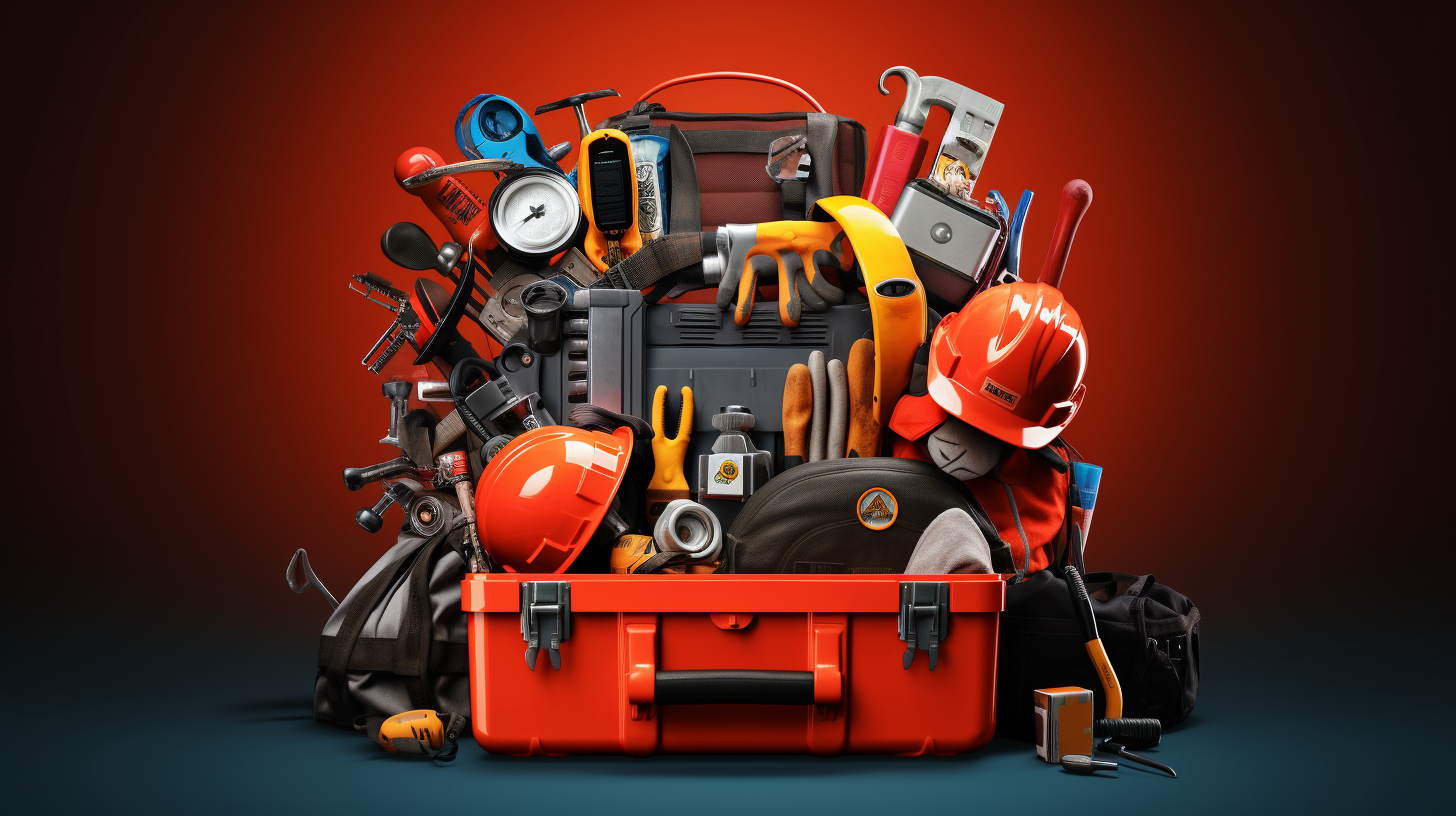We've got all the tools and safety tips you need to master water heater repair.
From common problems to step-by-step guides, we'll show you how to fix it all.
Plus, we'll share maintenance tips for ensuring your water heater lasts.
Get ready to become a water heater repair pro with our comprehensive guide.
Let's get started!
Essential Tools for Water Heater Repair
We need a few essential tools to successfully repair a water heater. The first tool we need is a multimeter. This tool helps us measure electrical current and voltage, allowing us to identify any issues with the electrical components of the water heater.
Another essential tool is a pipe wrench. It allows us to tighten or loosen fittings and connections on the water heater. A pair of channel-lock pliers is also necessary to grip and turn pipes and fittings securely.
Additionally, we need a tankless water heater flush kit to clean out any sediment or mineral buildup inside the tank. Finally, a flashlight is crucial for inspecting hard-to-reach areas and identifying any potential leaks or damage.
With these essential tools in hand, we can confidently tackle any water heater repair job.
Safety Precautions to Follow
To ensure a safe repair process, it's essential for technicians to follow proper safety precautions. When working on a water heater, there are several important steps to take to minimize the risk of accidents and injuries.
First and foremost, it's crucial to turn off the power supply to the water heater before starting any repairs. This will prevent any electrical shocks or fires.
Additionally, technicians should wear appropriate protective gear, such as gloves and safety glasses, to protect themselves from burns, cuts, and chemical exposure.
It's also important to drain the water heater and release any built-up pressure before attempting any repairs.
Finally, always double-check the manufacturer's instructions and guidelines to ensure proper handling and prevent any potential hazards.
Common Water Heater Problems to Fix
After taking the necessary safety precautions, we can now delve into common water heater problems that need to be fixed.
One common issue is a lack of hot water. This could be caused by a faulty heating element or a malfunctioning thermostat. To fix this, you may need to replace the heating element or adjust the thermostat settings.
Another problem is a leaking water heater. This can be due to a damaged or worn-out valve, a loose connection, or a cracked tank. To resolve this issue, you might need to replace the valve, tighten the connections, or even replace the entire tank.
Additionally, sediment buildup can cause poor water heater performance. Flushing the tank regularly can help prevent this problem.
Step-by-Step Repair Guide
To begin the step-by-step repair guide for water heater problems, gather all the necessary tools and equipment. Having the right tools will ensure that you can effectively tackle any issues that may arise.
Start by gathering a pair of safety goggles, gloves, and a flashlight for personal protection. You'll also need a multimeter to measure electrical currents, a wrench or pliers to loosen and tighten connections, a screwdriver to remove panels, and a pipe wrench to work on water connections.
Additionally, have a bucket or towels ready to catch any water that may leak during the repair process.
Once you have all the necessary tools, you'll be prepared to tackle any water heater problem that comes your way.
Maintenance Tips for Longevity
Now let's delve into essential maintenance tips to ensure the longevity of your water heater.
Regular maintenance is crucial to keep your water heater running efficiently and extend its lifespan.
Firstly, check the pressure relief valve annually to ensure it's functioning correctly. If it isn't working properly, it can lead to excessive pressure buildup and potential damage to the tank.
Secondly, flush the tank at least once a year to remove sediment buildup. Sediment can cause corrosion and reduce the efficiency of your water heater.
Lastly, inspect the anode rod every three to five years and replace it if necessary. The anode rod helps prevent rust and corrosion inside the tank, preserving the lifespan of your water heater.
Frequently Asked Questions
How Often Should I Drain My Water Heater to Prevent Sediment Buildup?
To prevent sediment buildup in your water heater, it's important to regularly drain it. Draining your water heater helps remove any accumulated sediment that can affect its efficiency and lifespan.
The frequency of draining depends on factors like the hardness of your water and the size of your tank. However, a general rule of thumb is to drain your water heater at least once a year.
This simple maintenance task can go a long way in keeping your water heater in optimal condition.
Can I Repair a Leaking Water Heater Myself, or Do I Need to Hire a Professional?
We can definitely repair a leaking water heater ourselves, although it might be necessary to hire a professional in some cases.
It's important to assess the severity of the leak first. Minor leaks, like a faulty valve or loose connection, can be fixed by tightening or replacing the damaged parts.
However, if the leak is more serious or involves the tank itself, it's generally recommended to consult a professional to ensure the repair is done correctly and safely.
What Should I Do if My Water Heater Is Not Producing Enough Hot Water?
If our water heater isn't producing enough hot water, there are a few things we can try before calling a professional.
First, we should check the temperature setting on the heater and adjust it if necessary.
We should also check the thermostat to make sure it's functioning properly.
If these steps don't solve the issue, it could be a problem with the heating element or a sediment buildup in the tank.
In that case, it's best to call a professional for further assistance.
Is It Safe to Use a Water Heater With a Damaged Pressure Relief Valve?
No, it isn't safe to use a water heater with a damaged pressure relief valve. A damaged pressure relief valve can lead to an increase in pressure inside the water heater, which can cause it to explode or rupture.
This can result in serious damage to your property and pose a significant safety hazard. It's important to replace a damaged pressure relief valve as soon as possible to ensure the safe operation of your water heater.
How Can I Determine if My Water Heater Needs to Be Replaced Instead of Repaired?
Determining whether to repair or replace a water heater can be a challenging decision. There are a few factors to consider.
Firstly, the age of the water heater plays a crucial role. If it's nearing the end of its expected lifespan, replacement might be a more cost-effective option.
Additionally, if the repair costs exceed half the price of a new water heater, it's usually recommended to replace it.
Consulting a professional plumber can provide further guidance based on the specific condition of your water heater.
Conclusion
In conclusion, mastering water heater repair is essential for maintaining the longevity and efficiency of your water heating system. By having the essential tools, following safety precautions, and being knowledgeable about common problems and repair techniques, you can save time and money on professional repairs.
Regular maintenance is also crucial in keeping your water heater in optimal condition. With these tips and guidelines, you can confidently handle water heater repairs and ensure a reliable supply of hot water in your home.



